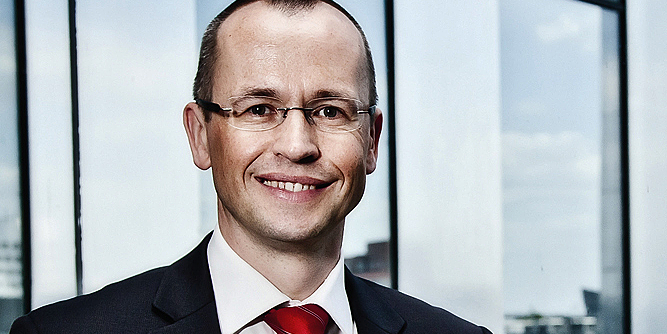Mike Winkel, head of E.ON Climate & Renewables, tells Recharge: “We want and need a supergrid in order to build up a European clean-energy portfolio and power system. However, when we look at the real picture, nothing is happening.”
He highlights two main challenges faced by the industry. Firstly, concerns at what he describes as “unstable regulatory frameworks” in Europe, where governments are getting worried about the costs of building renewables and its impact on consumers and energy-intensive industries.
"When governments start thinking too much and changing actual schemes, then investors get nervous. I would say the renewables business is probably nervous right now about what governments might do to the existing support frameworks.
“Secondly, the power-utility industry is under more pressure from rating agencies, and is therefore finding it more difficult to finance growth on our own balance sheets. I think we need to find more co-investors, like pension funds and insurance companies, who will finance further growth in renewables.”
He believes the EU’s 2020 renewables targets are on track, but he is frustrated at the lack of goals beyond that.
“But just giving out targets is not enough,” he says. “We need to have a firm idea as to how we are going to develop grid infrastructure and to agree the bigger picture and have a master plan that brings these things together.”
Germany’s biggest utility is still bullish about prospects for growing its European wind portfolio, both onshore and offshore, with a focus on the UK, Scandinavia, Poland, and the Baltic and North seas. “We plan to construct roughly 200MW every year onshore in Northern Europe.”
Last year, E.ON signed promising development agreements with large Scandinavian landowners. For Norway, it is looking at projects with a potential total capacity of 600MW.
“When it comes to offshore wind, we also want to construct another 200MW on average each year, mainly in the UK and Germany in the period up to 2015.”
But Winkel believes there will be no future for renewables in the long term unless costs can be reduced. “Basically, we have defined quite ambitious targets within E.ON — of cutting offshore costs by 40%, onshore by 25%, and PV by 35% by 2015.”
In its offshore wind operations, E.ON has identified cost reductions for the turbines, foundations, electricals and installation.
“We have also changed the way we tackle offshore projects,” Winkel says. “Historically we used to look at them on a project-by-project basis. We used to have separate projects teams which brought the turbines for each project, hired the vessels, and so on. But now we are doing all our offshore projects rolled into one portfolio, which saves on time and costs.”
Winkel remains optimistic that the renewables market in Europe will continue to grow. “I am very supportive when talking to politicians about reducing subsidies for new projects in the future, and I believe we can reduce our costs at the same time.
“However, my biggest concern is about the whole European energy system in general, where member states really have to get their act together and fix the ETS. We have to talk about a European renewables market, or we will end up only in national discussions.”
Capex recycling
E.ON has a new build-operate-transfer approach to developing renewables called “capex recycling”, bringing co-investors such as pension funds and insurance companies into its main projects.
“We did our first important deal using this approach, selling 50% in three US onshore wind farms to PensionDanmark at the end of last year. In the last few weeks, we have talked to a variety of investors about extending this idea,” says Mike Winkel.
“Basically, we develop and construct the projects, as these types of investors don’t usually want to take on large construction risk. When construction is completed, we bring in an investor, who can even hold a majority share.
“This strategy allows us to recycle at least €300m [$396m] every year, which we can then put into all kinds of new projects.”

